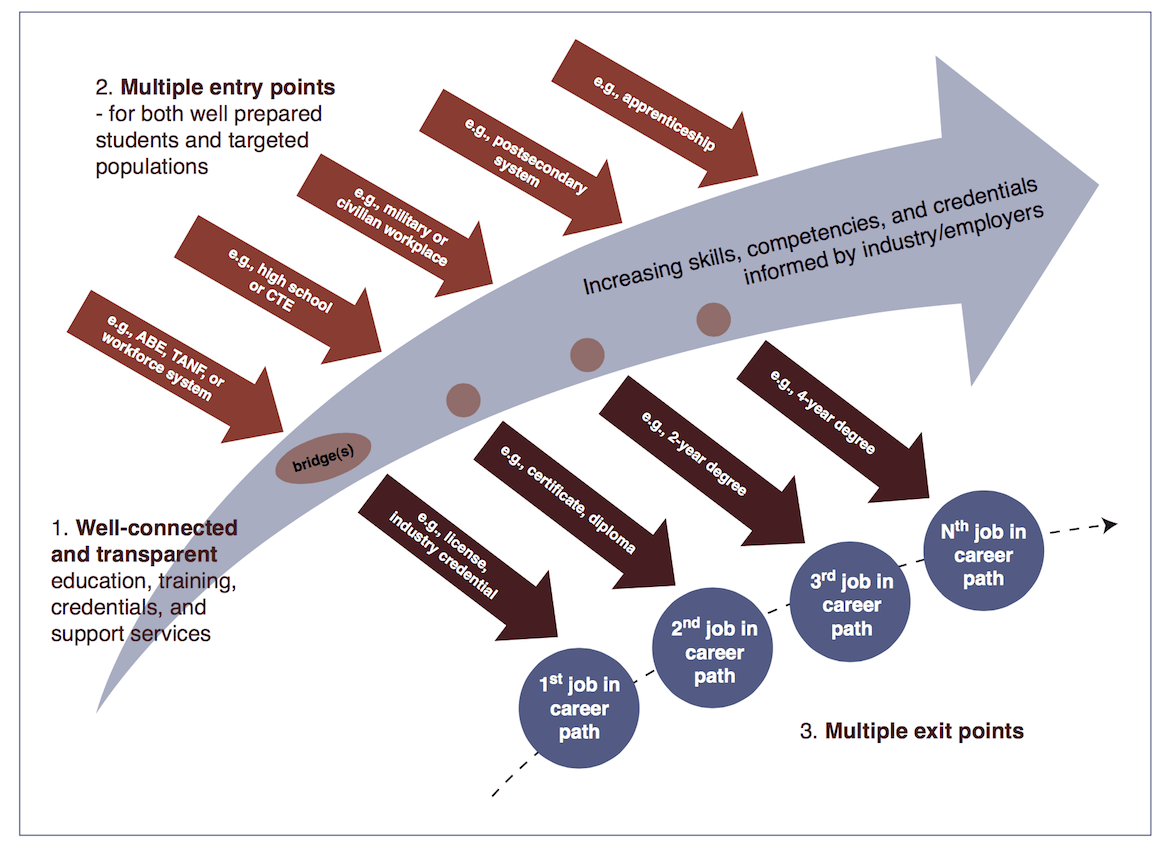The term “career pathways” is not new. If you ask anyone who has been around the world of workforce development for any length of time, the concept has been part of the lexicon for several decades. But there is renewed interest in the term over the last few years. And with this interest comes a refreshed definition that can alter the way individuals work in the decades to come.
Everywhere we look we see career pathways.
The new Workforce Innovation Opportunity Act (WIOA, the federal legislation that funds workforce development programs throughout the country) mentions career pathways nearly two dozen times. Our friends at CLASP are doing ground breaking work about career pathways through their Alliance for Quality Career Pathways (AQCP) initiative. And individual state initiatives are popping up on an almost weekly basis.
But beyond new legislation and initiatives, the career pathway “movement” is providing a new mechanism by which training institutions, community based organizations, employers, and workers can come together in an organized fashion. This momentum, if captured right, can lead to significant change if we work together.
The new definition of career pathways (granted, there are still several definitions) is robust and representative of the workforce environment in total. Going beyond the traditional sequencing of courses, credentials, and jobs, this new definition focuses on the holistic needs of both workers and employers.
The idea that we ought to be concerned about transportation or childcare needs for low-income workers, for example, isn’t new. But the idea that we should integrate those resources into a single career pathway plan that engages service providers, training institutions, and employers means our collective work can be more impactful for a longer term for more people.

Information courtesy of CLASP/AQCP
We are seeing this play out with a major healthcare employer in West Michigan. As an organization, they have committed to ensuring that their workers’ career pathways are established and supported as part of a long-term diversity and talent pipeline strategy. Just as organizations spend lots of time and money on infrastructure maintenance for buildings and technology, employers should also invest in the long-term “maintenance” of their workforce.
The career pathway strategy does just that.
By caring about the supportive services needed to recruit and retain talent, ensuring that there are multiple entry points to both employment and training, and recognizing multiple exit points (or milestones) that build on one another, workers have the ability to develop their skills while advancing their careers. This is a win-win-win for the employer, the workforce, and the community at large.
In a perfect world, all employers would champion the use of career pathways so that all workers can own and self-direct their individual pathway. We are a long way from that world, but we have the opportunity now to harness momentum and resources that can lead us toward that goal.
We know that the vast majority of people want to work and contribute their skills in the form of a satisfying career. We know also that everyone deserves economic independence so as to best serve themselves, their families, and the communities they call home. These are aspirations that all of us can sign on to and support. And if we do, we can make career pathways a tool that transforms the American workforce for decades to come.


Comments are closed.